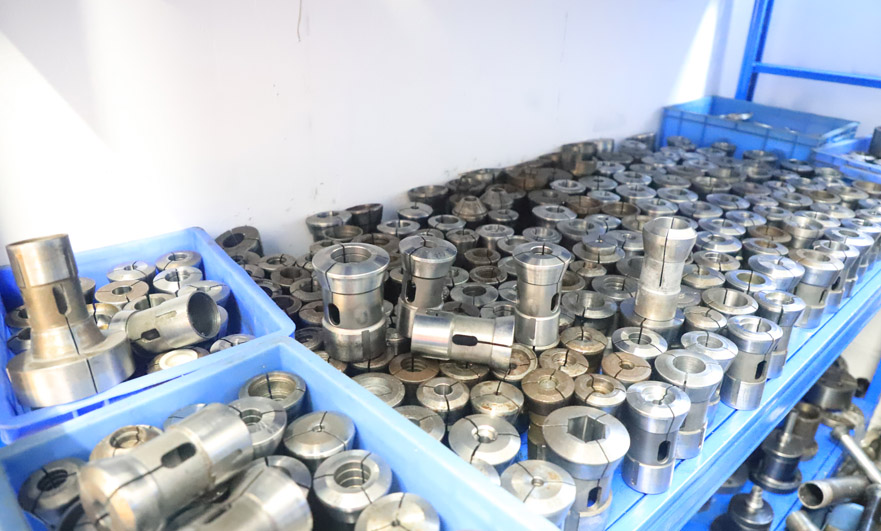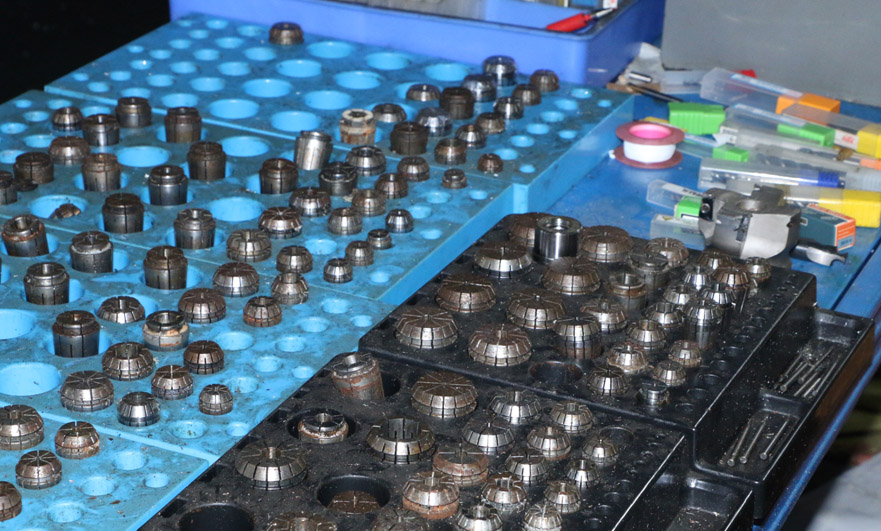15 years one-stop China custom CNC machining parts factory

Hey there I’m VMT Sam!
With 25 years of CNC machining experience we are committed to helping clients overcome 10000 complex part-processing challenges all to contribute to a better life through intelligent manufacturing. Contact us now
 194 |
Published by VMT at Aug 04 2021
194 |
Published by VMT at Aug 04 2021
Nowadays, CNC machine tools are widely used in CNC precision machining factory. The machine tools and tools used come from all over the world, with different models and standards. Today, VMT will chat with you about the knowledge of CNC precision machining center tool holders.
The CNC precision machining tool holder is the connecting body of the machine tool and the tool. The tool rest is a key link that affects the concentricity and dynamic balance. Concentricity can determine whether the cutting amount of each cutting edge part of the tool is uniform when the tool rotates once; it will not move when the spindle rotates. The balance will vibrate periodically.
Divided into two categories according to the spindle taper hole:
According to the taper of the spindle of the CNC precision machining center, it is usually divided into SK universal tool holders with a taper of 7:24 and HSK vacuum tool holders with a taper of 1:10.

SK universal tool holder, taper 7:24
7:24 means that the taper of the tool holder is 7:24, which is a single taper surface positioning, and the taper shank is longer. The tapered surface plays two important roles at the same time, namely the precise positioning of the CNC precision machining tool holder relative to the spindle and the realization of tool holder clamping.
Advantages: It is not self-locking, which can realize the rapid loading and unloading of the tool; the CNC precision machining manufacture of the tool holder only needs to process the cone angle to high precision to ensure the accuracy of the connection, so the cost of the tool holder is relatively low.
Disadvantages: The tapered hole at the front end of the CNC precision machined spindle will expand during high-speed rotation. The amount of expansion increases with the increase of the radius of rotation and the speed, and the rigidity of the taper connection will decrease. Under the action of the pulling force of the tie rod, the axial displacement of the tool holder will also change. The radial dimension of the tool holder will change every time the tool is changed, and there is a problem of unstable repeat positioning accuracy.
There are usually five standards and specifications for universal CNC precision machining tool holders with a taper of 7:24:
1. International standard IS0 7388/1 (referred to as IV or IT)
2. Japanese standard MAS BT (abbreviated as BT)
3. German standard DIN 2080 type (abbreviated as NT or ST)
4. American Standard ANSI/ASME (CAT for short)
5. DIN 69871 type (abbreviated as JT, DIN, DAT or DV)
Tightening method:
NT-type tool holders are fastened by tie rods on traditional CNC precision machining machine tools, which are also called ST in China; the other four tool holders are fastened by pull studs at the back of the tool holder of the CNC precision machining center.
Versatility:
1) At present, the most widely used tool holders in China are DIN 69871 type (namely JT) and Japan MAS BT type tool holders;
2) DIN 69871 type tool post can also be installed in the ANSI/ASME spindle taper hole of the CNC precision machining machine tool;
3) The international standard IS0 7388/1 tool post can also be installed on DIN 69871, ANSI/ASME spindle taper CNC precision machining machine tools, so in terms of versatility, IS0 7388/1 tool post is the best.
HSK vacuum tool holder with a taper of 1:10
The HSK vacuum tool holder relies on the elastic deformation of the tool holder, not only the 1:10 cone surface of the tool holder is in contact with the 1:10 cone surface of the spindle hole of the CNC precision machining machine tool, but also the flange surface of the tool holder is in close contact with the surface of the spindle. The surface contact system is superior to the 7:24 universal tool post in terms of high-speed CNC precision machining, connection rigidity and coincidence accuracy.
The HSK vacuum tool holder can improve the rigidity and stability of the system and product accuracy during high-speed CNC precision machining, and shorten the tool change time. It plays a very important role in high-speed machining. It is suitable for the spindle speed of the machine tool to reach 60000 rpm. HSK tool systems are being widely used in aerospace, automotive, precision mold and other manufacturing industries.
HSK tool holders are available in A-type, B-type, C-type, D-type, E-type, F-type and other specifications. Among them, the commonly used CNC precision machining centers (automatic tool change) are A-type, E-type and F-type.
The biggest difference between Type A and Type E:
1. Type A has a transmission groove, type E does not. So relatively speaking, the transmission torque of Type A is relatively large, and relatively heavy cutting can be carried out. The torque transmitted by the E type is relatively small and can only perform some light cutting.
2. In addition to the transmission groove on the A-type tool post, there are manual fixing holes, direction grooves, etc., so the balance is relatively poor. There is no E type, so E type is more suitable for high-speed CNC precision machining.
The mechanism of Type E and Type F is exactly the same. The difference between them is that the taper of E-type and F-type tool holders (such as E63 and F63), also known as, should be one size smaller. In other words, the flange diameters of E63 and F63 are both φ63, but the cone size of F63 is only the same as that of E50. So compared with E63, F63 will be faster (small spindle bearing).
Tool holder installation form
Spring chuck: mainly used for clamping straight shank tools and tools such as drills, milling cutters, taps, etc. The elastic deformation of the circlip is 1mm, and the clamping range is 0.5~32mm in diameter.

CNC precision machining tool holder installation form
Spring chuck: mainly used for clamping straight shank tools and tools such as drills, milling cutters, taps, etc. The elastic deformation of the circlip is 1mm, and the clamping range is 0.5~32mm in diameter.
Hydraulic chuck:
A- Tighten the screw, use an Allen key to tighten the lock screw;
B-Lock the piston and press the hydraulic medium into the expansion chamber;
C-Expansion chamber, which is squeezed by liquid to generate pressure;
D-Thin expansion bushing. During the locking process, the center of the tool clamping rod is positioned and evenly wound.
E-special seals ensure ideal sealing and long service life.
Heated tool holder: Use induction heating technology to heat the tool clamping part on the tool holder to enlarge its diameter, and then put the cold tool holder into the hot tool holder.
The heating tool holder has large clamping force and good dynamic balance, which is suitable for high-speed CNC precision machining. High relocation accuracy, generally within 2μm, radial runout within 5μm; good anti-fouling ability, good anti-interference ability during CNC precision machining. However, each tool holder is only suitable for installing a tool with a diameter of the tool holder, and a set of heating equipment is required.
Ready To Start Your Next Project?
Get Instant Quote

Request a Free Quote
Send us a message if you have any questions or request a quote. We will get back to you ASAP!